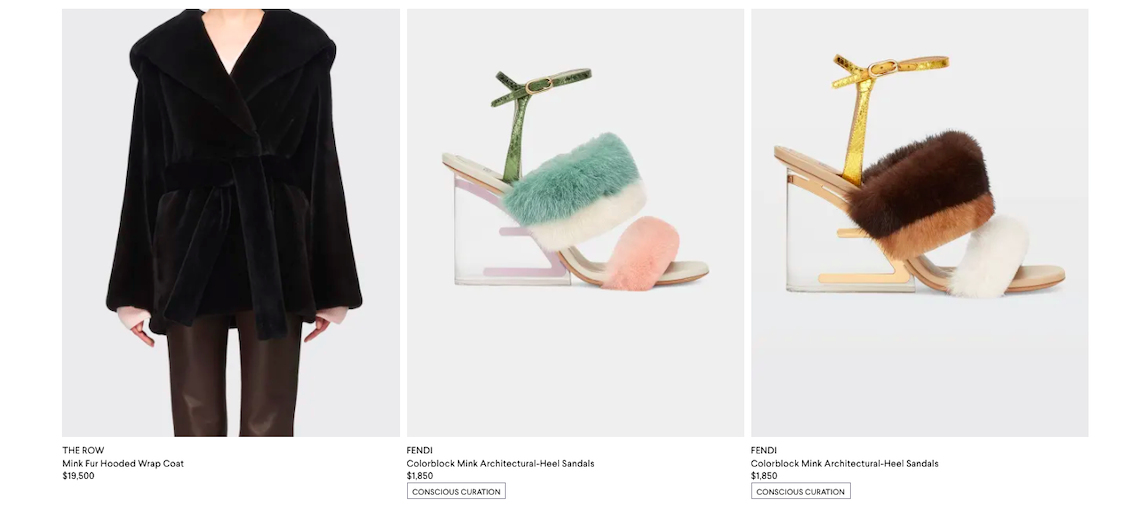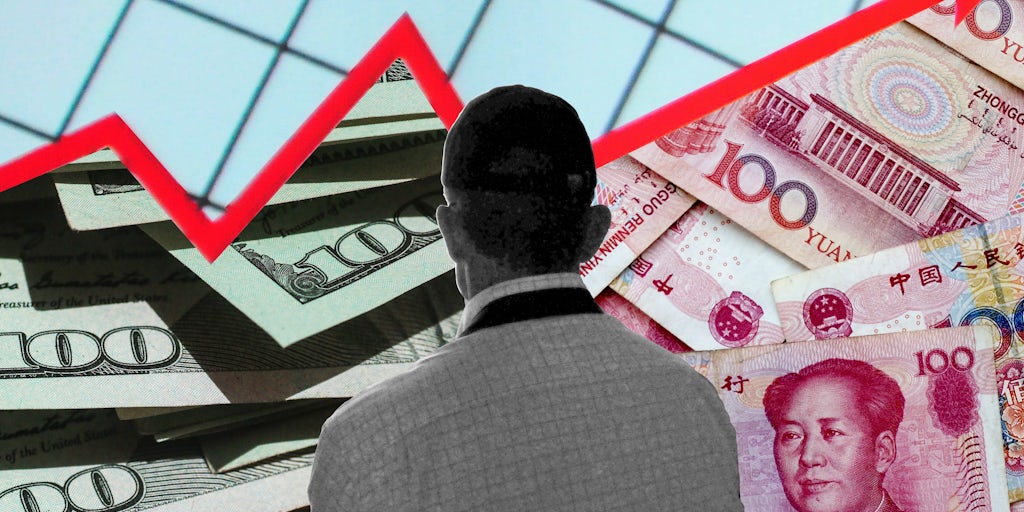Catastrophic bird flu outbreak at mink farm sparks alarm as some fashion brands won’t give up fur
Historically, mink fur has been a symbol of classic glamour and luxury. But a farm producing it has now become a transmission site for a disease that could kill you and half of everyone you know.
With bans of mink farms already enacted in several countries due to prior Covid-19 outbreaks, a troubling new study made headlines last week after finding mammal-to-mammal transmission of the deadly H5N1 “bird flu” virus on a mink farm in Spain. So far, the virus has had a 56% mortality rate in humans that have contracted it, causing multiple experts to call for the total closure of mink farms. While most major fashion brands have already abandoned all fur, mink items can still be found in the collections of some of the world’s biggest luxury labels.
According to a paper in science journal Eurosurveillance published last week, an outbreak of the H5N1 virus at a mink farm in Spain indicated the possibility of transmission of the virus from mink to mink. So far, known cases of infections in humans have been through direct contact with birds, making evidence of mammal-to-mammal transmission concerning. Furthermore, the study indicated there could be a mutation in the virus that increases the likelihood of transmission between mammals, including humans.
“Here we have an example of a bunch of mammals in close proximity to each other with bird flu introduced, and transmission between those mammals,” said said Dr. Isaac Bogoch, a clinician investigator at the Toronto General Hospital Research Institute. “The question is, when you have severe infection that now is more readily transmitted between these minks, could it more readily transmit between minks and other species like humans, and could it be more readily transmitted between humans causing a larger outbreak?”
An online search of mink-fur clothing reveals sales of mink-fur items by brands The Row, Fendi, Oscar de la Renta and Philipp Plein. Brandon Blackwood, meanwhile, sells handbags and sandals with mink fur. Mink items by fur-focused brands including Yves Salomon, Pologeorgis, Gorski, Burnett, Kelli Kouri and Reich can still be found at a range of luxury retailers such as 24S, Harrods, FWRD, Neiman Marcus, Bergdorf Goodman and Harvey Nichols, although the latter three retailers have promised to phase out all fur in 2023.
An $1,850 pair of Fendi dyed mink-fur sandals currently has Bergdorf Goodman’s “Conscious Curation” label, which the retailer describes as an initiative offering “clarity around our definition” of sustainability that “makes it easier for you to confidently shop the brands and products making a positive difference in the world.”
“There is something specific to minks” that speeds up the spread of disease, said Bogoch. “Mink and related animals often serve as models in laboratory settings” because “they’re really capable of acquiring and transmitting these infections,” he said. He added that “there has been mammal-to-mammal transmission before. It’s just smaller [and] not to this extent. And that’s why this is different.”
This isn’t the first time virus transmission has led to calls for the end of mink farming. The H5N1 discovery has prompted a new wave of calls to close all mink farms, a policy that was already enacted in Italy and the Netherlands in 2021, and temporarily in Denmark in 2020, following Covid-19 transmission between minks and humans on mink farms. In 2022, the U.S. House of Representatives passed a ban on mink farming. Fur farming of any animal is banned by over 20 countries, according to the Fur Free Alliance.
These bans and culling of millions of minks led Kopenhagan Fur, the world’s largest fur auction house, to announce that it will be closing this year.
According to a paper by a researcher at the University of Copenhagen, the size of the global fur retail trade was estimated at $20.1 billion. The market has shrunk considerably over the past decade. Data on the size of the pre-pandemic fur market valued it at $40 billion, according to a study in 2013 by Pricewaterhouse Coopers Italy commissioned by the International Fur Federation. As of 2018, estimates of the market size ranged from $24 billion to $33 billion.
The University of Copenhagen paper also estimated that 25% of world production and 30-35% of world trade in raw mink skins was eliminated as a result of Covid-19 measures.
Now, calls to speed up the closure of mink farms worldwide have been amplified. A New York Times op-ed by columnist Zeynep Tufekci published last week recommended the closure of all mink farms to reduce risks of a pandemic of apocalyptic proportions. In an article in Science also run last week, another expert called for the end of mink farming, citing the “existential threat” of the H5N1 virus.
While Bogcoch said he does not have the expertise on mink farming practices to call for a specific policy, he stressed the fact that “the status quo is not the path forward.”
“We have to be very mindful of infections that can jump between different animal species,” he said.
Fashion brands keeping the mink farms in business are now in the minority, as most of the world’s biggest luxury labels have cut fur out of their production in recent years. This wave began prior to the Covid-19 pandemic, when brands including Gucci (2017), Bottega Veneta (2018), Burberry (2018), Chanel (2018), Versace (2018) and Prada (2019) announced they were going fur-free due to animal-rights and environmental concerns. After the start of the pandemic, they were joined by all remaining Kering brands, as well as Chloé, Valentino, Dolce & Gabbana and Moncler. While Oscar de la Renta mink-fur items are still available for purchase, the brand also announced in 2021 that it would eliminate fur items for sale following pressure from Billie Eilish.
A representative for LVMH said in a statement that the conglomerate still allows its brands to produce fur items while “drastically strengthening our rules and practices.” According to the statement, “The fur sector is already largely regulated by both government and industry standards, which put public health, animal welfare and sustainability at the heart of their concerns.” The company “primarily” sources mink skins from Finland, North America, and Canada. “The Group ensures extensive farming is privileged in its supply; intensive breeding known for often bringing zoonoses and spreading diseases.”
Those that continue to produce fur have fewer places than ever to sell it: Fur sales are totally banned in California as of January 1 this year. In addition to Neiman Marcus and its subsidiaries, retailers including the Yoox Net-a-Porter Group, Farfetch, Bloomingdale’s, Nordstom, Macy’s and Mytheresa have all cut out fur sales.
Overall, fur is quickly falling out of the fashion zeitgeist. London Fashion Week banned fur at shows in 2018. In 2022, it was joined by Copenhagen Fashion Week, where a recent Margot Tenenbaum-themed runway show by Baum und Pferdgarten featured zero mink coats. Schiaparelli’s recent viral fashion show with Kylie Jenner’s famous lion-head dress was an entirely faux-fur affair.
Market forces may be at play in brands phasing out fur as they look to attract a younger generation of customers. In global luxury capital France, a 2021 poll by the Institut Français d’Opinion Publique (IFOP) found that 90% of the population is opposed to fur. A 2019 Boston Consulting Group report found that animal welfare was the top sustainability concern among Gen-Z luxury customers, while 64% of Gen-Z and millennial shoppers said sustainability impacts their purchase decisions. But demand for mink fur certainly still exists, especially in other global markets: Luxury consumers in China are still interested in buying fur, for example.
Now, the question for lawmakers, brands, retailers and consumers is that of how to move forward with mink farms given the new H5N1 news. Apart from LVMH, brands mentioned in this article did not respond to or could not be reached for comment.
“I know people want certainty and answers, but it’s important to communicate uncertainty, because there is uncertainty. And it’s also important to communicate that doing nothing is not a good option,” said Bogoch. “There is always the potential for pandemics with viruses that are far more severe than Covid-19.”





